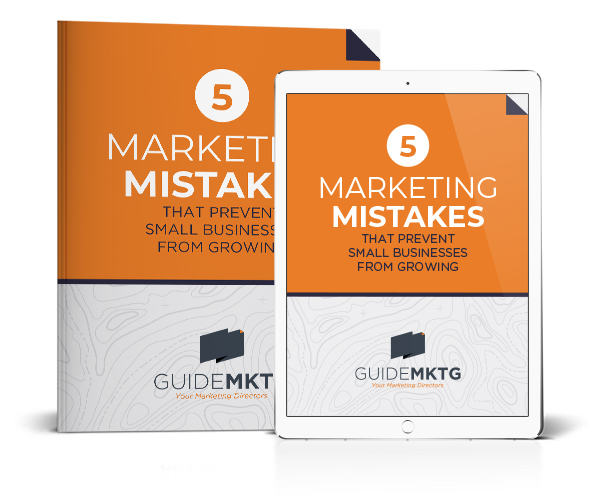This lead generation case study (and the instantly-actionable tips and strategies we’re about to share!) is based on Josh Brammer’s interview with Dr. J.J. Peterson, StoryBrand expert and host of the podcast Building a StoryBrand with Donald Miller.
For more details, and to hear the full podcast, click here.
The success of every business, in every industry, no matter what it’s selling, is largely determined by that company’s ability to generate leads. While referrals are highly valuable, consistent business growth requires a steady flow of qualified leads who are ready to purchase now or in the not-too-distant future.
Lead generation is so essential to the business growth process that entire marketing and sales teams (and tens of thousands of dollars!) are devoted to this single goal. Yet, so many of the businesses we partner with here at Lantern don’t know how to leverage the lead generation process to access high-quality leads. Instead of focusing on a handful of effective lead generation tools, these companies chase dozens of competing marketing tactics, spreading their budget— and their marketing team— thin.
In today’s article, we’re sharing our best secrets and strategies for improving your lead generation process. It worked for the client we profile in the podcast linked above, and we know it can work for your service-based business, too.
Let’s start with a quick refresher: What’s a lead generator, and why do you need one?
A lead generator, also called a lead gen, is any highly-valuable asset you share with your target audience in exchange for their contact information and/or a little more info about their situation. They receive a helpful resource, and you get the information your sales team needs to follow up with these prospective customers— and hopefully close a deal soon.
Lead generation marketing (when done well!) is an incredibly valuable sales tool for a number of reasons:
-
It can add significantly more leads to your sales teams’ pipeline in a relatively short period of time
-
You get access to your potential customers’ contact info, which your sales team can use to follow-up with and nuture these leads
-
The right lead gen helps your business establish trust with your target audience by providing a highly valuable free asset
-
It gives you the opportunity to prove that your business knows how to solve your prospective leads’ key problem— improving your customer loyalty and conversion rate
Here’s how Josh describes the power of lead generation marketing:
“First off, it solves a problem for me, [as a customer], right? It gets something out of the way, gets questions or confusion or fears out of the way for me. And that would immediately allow me to start trusting [the business] as my guide because they’re telling me what to do. And they’re giving me value.”
The right sales lead generation tools not only give you access to your potential customers’ inboxes— they warm your qualified leads in the process. By the time you start nurturing these sales leads, they’re already familiar with your business, what you offer, and the value you can deliver.
Here are a few examples of marketing tools that can help you generate leads for your sales team:
-
An ebook
-
A free webinar
-
Downloadable checklists, how-to guides, templates, scripts, or examples
-
A video course
-
Planners or worksheets
-
A free call, session, or meeting
As you can see, any kind of valuable asset can help your sales and marketing teams generate leads. And as an added benefit, a strategically planned lead gen can even improve your incoming lead quality.
“The right lead gen can qualify your site visitors, so you’re attracting the right ones and repelling the ones that are going to be a waste of time and money for everybody.”

Better quality leads start with a better lead generation system
Your lead generation strategy should narrow your sales leads to a small pool of the most qualified, most interested, best fit customers within your target audience.
It sounds counter-intuitive: Create a lead generation tool that deters more leads than it attracts! But the best lead generation strategies are narrowly targeted at the potential leads who fit your target audience to a T.
Here’s what J.J. has to say about using your generator for lead qualification:
“A lot of people think, I need to get more people into conversations. But by getting less people into the conversation, they’re actually making more money. They’re actually able to get more clients because they’re targeting the right audience. That is the thing lead generators can do: qualify your audience and get the right people in the door. So you’re not wasting time with conversation, and you’re not spending half a day [with a customer] that will never hire you.”
To maximize your resources, your business can’t afford to waste time on leads that just aren’t a good fit. And a sales pipeline that’s cluttered by these leads makes it difficult for your sales team to reach real paying customers. Here at Lantern, we believe proper lead qualification is one of the best marketing efforts you can make to improve your sales process and convert more leads.

4 tips for creating a high-converting lead generation strategy
The best lead generation strategies are built with these four tips in mind:

Qualify your audience
Before you can create your lead generation asset, build a landing page, or run social media ads to your lead capture, you have to know your audience. You can’t bring in qualified leads if you don’t know what qualities you’re looking for! Take time to conduct target market research to understand your potential customers’ needs, wants, pain points, fears, aspirations, demographics, and more.
Once you understand who you’re talking to, choose a lead gen type that appeals to your target audience. For example, if your highest quality leads tend to be busy parents, the best lead generation asset you can offer might be a time-saving resource related to your service— like a checklist, calendar, template, or course.

Create trust by solving a problem
Generating leads is easier when you have a simple way to build trust with your ideal customer. And your online lead generation asset is a great way to build that trust quickly and with little ongoing effort on your part.
Through the lead qualification process, you should have learned exactly what pain points your customer faces. Now, you can use that information to create a lead gen that speaks directly to the problem.
When you offer a resource that solves your customer’s problem for free, you build significant trust with them. You prove that you understand the problem they face, have an answer to it, and are willing to offer it at no charge. In the customer’s mind, that suggests your company will offer higher quality solutions and better customer service if they do choose to purchase in the future.

Position yourself as a guide
When you’re planning and writing your own lead gen, focus on how you can position yourself as the helpful guide that directs your customer (the hero) towards the solution to their problem.
Your lead generation asset shouldn’t be overly salesy or focused on your product or service. It must be a valuable resource that helps potential leads solve a problem they’re currently facing. Only once you provide that value will they be ready to consider buying what you offer.

Add a compelling title
Now that you’ve studied your audience, planned your sales funnel, and built out your lead generation system, it’s time to give your asset a click-worthy title.
Pick a lead capture title that instantly hooks your potential customers. You can speak directly to the problem they’re facing, paint a picture of how their life might change for the better if they engage with your asset, or use emotion-invoking words like “best”, “success”, or “fool-proof” to grab their attention. Be sure your title is compelling enough to encourage your prospective leads to hit the download button, but still clear enough to give them an idea of what to expect when they do.

Lead generation tools are just one piece of the strategy
In this article, we’re focusing on how to create a high-impact asset that generates a ton of quality leads. But keep in mind, it takes an equally targeted follow-up strategy to convert those new leads into repeat customers! Lead nurturing ensures your business is top-of-mind when your customers need you. And it’s one of the best marketing habits you can develop for steady, long-term results.
At Lantern, we help sales teams streamline their lead generation process
When it comes to narrowing your target audience and creating a compelling lead generation campaign, or improving your follow-up and lead nurturing strategy, the Lantern marketing team can help. Learn more about our process, then send a note to our team when you’re ready for a simple sales funnel that works!





